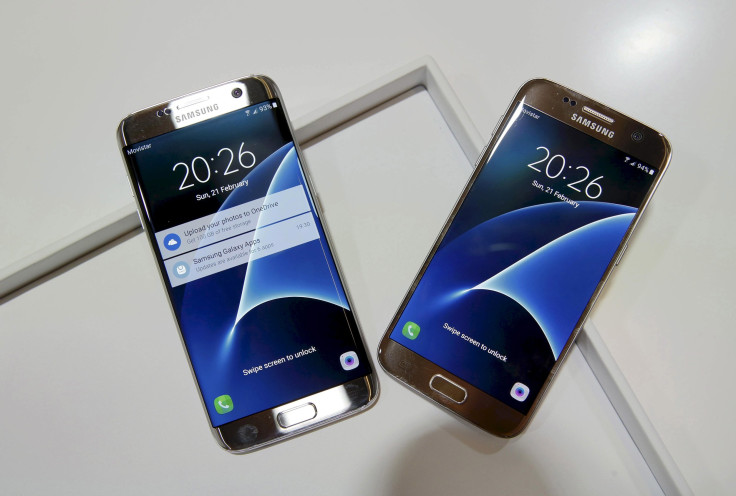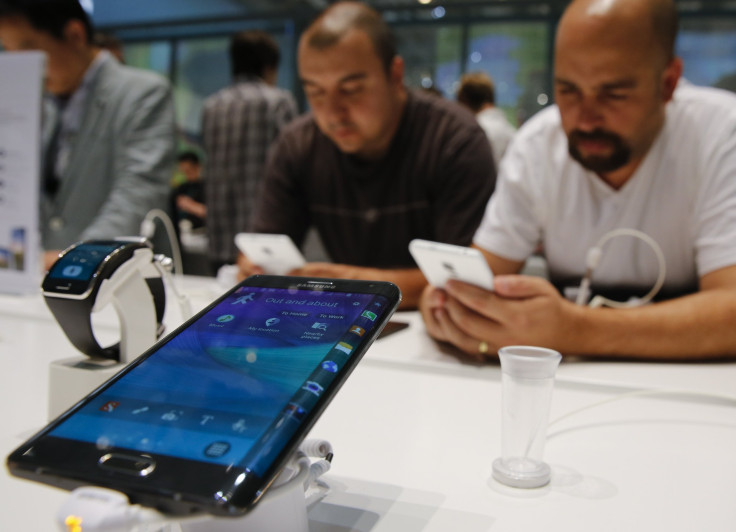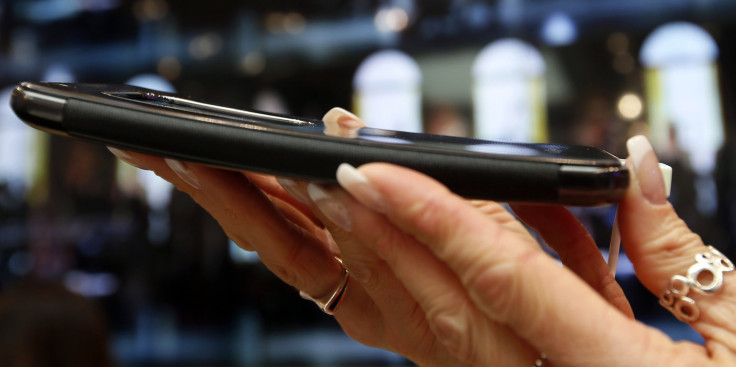Samsung Folding Smartphones Could Give Company The Edge Over iPhone In 2017

The basic form of the smartphone hasn't changed in years, and that's likely one reason growth in that market has slowed to single digits in 2016. And yet Samsung, the world's largest smartphone maker, could be about to shake things up with flexible screens that would allow large screens to be folded and more easily placed in a pocket.
If Samsung can deliver, it could help the company return to growth in an ultracompetitive market where margins are razor-thin — while also giving it a huge advantage over its main rival, Apple.
According to sources speaking to Bloomberg who are familiar with Samsung’s plans, the company is preparing two smartphones for launch in early 2017 — possibly at the Mobile World Congress trade show in February — that will feature folding displays. One will be a device that will fold in half like a cosmetic compact, while the other will feature a regular 5-inch screen in smartphone mode that could “unfurl” to an 8-inch screen in tablet mode.
An earlier report from Korean publication ETNews backs up these claims, saying the flexible displays — codenamed Project Valley — are being tested via a prototype smartphone, with plans to put the panels into production before the end of 2016.

Samsung has not commented on the rumors, but the company has made no secret of its goal to produce a folding smartphone, releasing concept videos of what the phone might look like and showcasing its flexible OLED displays at trade shows in recent years.
Samsung has invested hugely in the research and development of flexible-display technology and is the closest of any of its rivals — primarily LG and Sharp — to making it commercial.
Samsung could also profit from manufacturing screens or licensing the technology to competitors, including Apple, if it takes off.
While Samsung’s display division has led the way in many smartphone screen breakthroughs in recent years — including Amoled panels and dual curved screens — making a commercially viable flexible smartphone screen will not be easy.
“The holy grail for curved screens is a screen that can be curled up and unfurled, so essentially a foldable screen,” Ian Fogg, mobile analyst with research firm IHS, told International Business Times. “But that’s very hard to do, because you need to have both a screen that is able to be curved but one that can be moved repeatedly without wearing out over time.”

Other limiting factors include the need to redesign the smartphone completely to make sure all the supporting components around the screen can also work with some kind of foldable design. Samsung would also have to retool its production lines to produce the new screen technology — something likely to involve a lot of money, time and, initially at least, relatively poor yields.
“It is complex technology to manufacture reliably, and this has implications on the eventual cost of devices using such screens,” Ben Wood, chief of research at CCS Insights, told IBT, adding that because the smartphone has evolved to a point where the majority of consumers are happy with the way it works, introducing something completely different at this point is “highly questionable.”
According to figures published by Gartner on Tuesday, smartphone penetration has reached 90 percent in mature markets, with upgrade cycles growing to 2.5 years. In a world where smartphone design has been refined to the point where almost everything looks like a monolithic slab of glass and metal in various shades of black, white, grey and gold, offering something different could be just what the market wants — but it could also backfire.
“Delivering a compelling design that adds meaningful benefits over and above the traditional flat-screen smartphone available today remains challenging,” Wood said.
Smartphone companies have moved away from all moving parts — such as sliding keyboards and physical buttons — as it is difficult to get these mechanical parts to work perfectly. The BlackBerry Priv, the company’s expensive Android smartphone with a sliding keyboard, is a perfect example, with an executive at AT&T telling CNET on Monday the device is “really struggling” with much higher return rates than normal.
However, Samsung has been here before and proved the doubters wrong.
When the company launched the original Galaxy Note in 2011 — when it had a 5.3-inch screen — many derided the device as a gimmick, too big for normal use. Today, the Note has not only proved to be one of Samsung’s best-selling ranges, it has effectively created the phablet market.
When Apple finally released a big-screen smartphone, it was three years after Samsung had launched its first Galaxy Note smartphone — an eon in smartphone terms. While Apple’s smartphone sold very well, many speculated that Apple had waited too long to take advantage of the growing trend for bigger displays.

Most analysts believe we are years away from getting the kind of folding-screen technology Samsung showcased in the above concept video it released in 2013, but what could be released next year is something that lies in between the flat displays used today and the fully foldable screens from the video.
That may be something similar to what is seen on LG’s Flex smartphones, where the screen curves from top to bottom to make it more comfortable to use. While these phones are certainly unique, they have failed to capture the public’s imagination, which will be key if Samsung wants its new smartphone to make a difference to its bottom line.
“Other than offering the ability to offer a differentiated design in a world of homogeneous smartphones, it is hard to see how flexible screens will be implemented,” Wood added, saying flexible screens seem a much better fit for products like fitness trackers or even VR headsets.
© Copyright IBTimes 2024. All rights reserved.






















